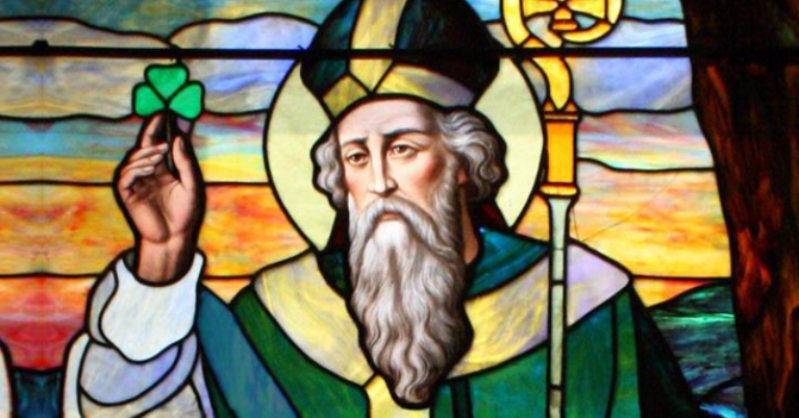
While St. Patrick's Day is known for green, boisterous revelry, the holiday has a long history that's much more somber. Saint Patrick was born around 387 C.E. in Scotland, Wales or England, and turned to God once he was kidnapped by slave traders and taken to Ireland to be a shepherd.
St. Patrick actually is credited with transporting Christianity to Ireland. Most of what is known about him comes from his two works: the Confessio, a spiritual autobiography, and his Epistola, a denunciation of British mistreatment of Irish Christians.
Although raised in a Christian family, Patrick held almost no interest in God, according to the History Channel.
When he was 16 years old, Patrick was kidnapped by robbers and taken hostage on a ship to Ireland. For the next six years, Patrick was held as a slave in the hills of Ireland, forced to tend sheep. Lost and alone, the teen cried out to God, begging for deliverance. In a dream, Patrick said he saw Irish children pleading with him to bring the Gospel to them, causing his heart to long to return to his former captors and share with them the gospel of Jesus Christ
"The love of God and his fear grew in me more and more, as did the faith, and my soul was rosed, so that, in a single day, I have said as many as a hundred prayers and in the night, nearly the same," he wrote, according to Catholic Online. "I prayed in the woods and on the mountain, even before dawn. I felt no hurt from the snow or ice or rain."
He joined the priesthood after his escape at the age of 20 years old, and eventually became a bishop. Patrick was enormously successful in converting much of the mainly Druid and pagan population of Ireland.
Patrick also is credited with building a church on the site of the present day St. Patrick's Memorial Church in Saul, which was the first-ever Christian church in all of Ireland. At the time of his death on March 17, Patrick was recognized as Ireland's foremost saint.
In the 17th century, Saint Patrick's Day became an official Christian feast day by the Catholic Church to commemorate the arrival of Christianity in Ireland and to celebrate the country's heritage.
Many Christians now observe the holiday by attending church services or going to mass in memory of the selfless work of St. Patrick.
Over the following centuries, legends sprang up about St. Patrick. According to one story, St. Patrick used the shamrock -- often associated with St. Patrick's Day -- as a way of explaining the Trinity: the Father, Son and Holy Spirit. Another popular legend claims that he drove the snakes from Ireland.
He spent more than 30 years of his life in establishing churches, schools, and monasteries across the country.
Many countries around the globe commemorate the Irish cultural pride holiday. However, St. Patrick's Day is an official holiday only in the Canadian province of Newfoundland and Labrador, the Caribbean island nation and Ireland.
Saint Patrick described himself as a "most humble-minded man, pouring forth a continuous paean of thanks to his Maker for having chosen him as the instrument whereby multitudes who had worshipped idols and unclean things had become the people of God."







